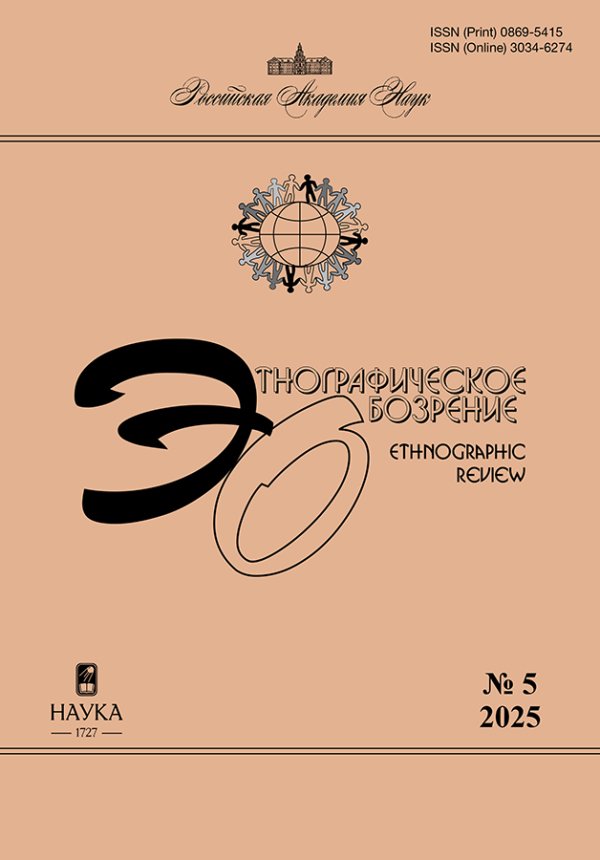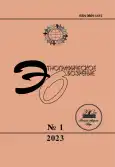Память о депортации калмыков “поколения 1,5”: конструирование нарратива
- Авторы: Гучинова Э.М.1
-
Учреждения:
- Институт этнологии и антропологии РАН
- Выпуск: № 1 (2023)
- Страницы: 30-44
- Раздел: Статьи
- URL: https://journals.rcsi.science/0869-5415/article/view/144855
- DOI: https://doi.org/10.31857/S0869541523010037
- EDN: https://elibrary.ru/PLUMZR
- ID: 144855
Цитировать
Полный текст
Аннотация
Ключевые слова
Об авторах
Э.-Б. М. Гучинова
Институт этнологии и антропологии РАН
Email: bairjan@mail.ru
Москва, Россия
Список литературы
- Александер Д. Смыслы социальной жизни: культур-социология / Пер. с англ. Г. Ольховикова. М.: Праксис, 2013.
- Анипкин М. Поколение лишних людей: антропологический портрет последнего советского поколения // Неприкосновенный запас. 2018. № 117. С. 290-308.
- Бакаев П.Д. и др. (cост.) Книга памяти ссылки калмыцкого народа: сборник документов и материалов. Т. 1. Кн. 1. Элиста: Калмыцкое книжное изд-во, 1993.
- Дубина В. Биография // Все в прошлом: теория и практика публичной истории / Отв. ред. А. Завадский, В. Дубина. М.: Новое изд-во, 2021. C. 143-172.
- Гучинова Э.-Б.М. У каждого своя Сибирь. Две истории о депортации калмыков (интервью с С.М. Ивановым и С.Э. Нарановой) // Oriental Studies. 2019. № 3. С. 397-422. https://doi.org/22162/2619-0990-2019-43-3-397-422
- Гучинова Э.-Б.М. Нарративы детей Сибири о депортации калмыков. Интервью с В.И. Бадмаевым и А.Н. Овшиновым // Oriental Studies. 2021а. Т. 14. № 4. С. 722-742. https://doi.org/10.22162/2619-0990-2021-56-4-722-742
- Гучинова Э.-Б.М. "Мертвецы есть?": язык травмы в нарративах о дороге в Сибирь // Монголоведение. 2021б. № 2. С. 303-313. https://doi.org/10.22162/2500-1523-2021-2-303-313
- Гучинова Э.-Б.М., Клименко Г.А. "У меня была хорошая Сибирь". Устные истории о депортации калмыков "поколения 1,5" // Этнография. 2022. № 2 (16). С. 94-117. https://doi.org/10.31250/2618-8600-2022-2(16)-94-117
- Некрич А.М. Наказанные народы. Нью-Йорк: Хроника, 1978.
- Томпсон П. Голос прошлого. Устная история. М.: Весь мир, 2003.
- Чуйкина С.А. Дворянская память: "бывшие" в советском городе (Ленинград, 1920-30-е годы). СПб.: Изд-во Европейского ун-та в Санкт-Петербурге, 2006.
- Ядов В.А. и др. Отцы и дети. Поколенческий анализ современной России. М.: НЛО, 2005.
- Rumbaut R.G.Rumbaut Ages, Life Stages, and Generational Cohorts: Decomposing the Immigrant First and Second Generations in the United States // International Migration Review. 2004. Vol. 38. No. 3. P. 1160-1205. https://doi.org/10.1111/j.1747-7379.2004.tb00232.x
- Strauss W., Howe N. Generations: The History of America's Future, 1584 to 2069. N.Y.: William Morrow & Company, 1991.
- Takaki R. Iron Cages: Race and Culture in Nineteenth-Century America. Oxford: Oxford University Press, 1990.
- Takezawa Y. Breaking the Silence: Redress and Japanese American Ethnicity. Sage House: Cornell University Press, 1995.
Дополнительные файлы










